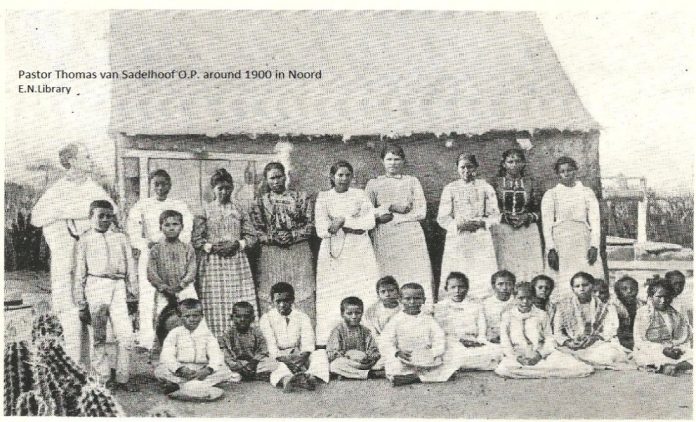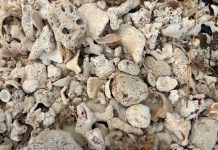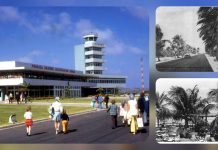Booking a magical glimpseinside EtniaNativa
Every week, Etnia Nativa writes a new episode concerning culture and heritage, focusing on various aspects of native knowledge, transcendental wisdom, and the importance of upholding cultural identity. Its goal is to educate readers and encourage them to embrace a genuine island state of consciousness. Today it shares information regarding Aruba’s first public teachers.
Aruba has come a long way to achieving its Catholic education, which began to be established in 1857 when nuns from Roosendaal, the Netherlands settled in Playa, later also in Santa Cruz, then Noord, and finally in Savaneta, the four parishes of the island.
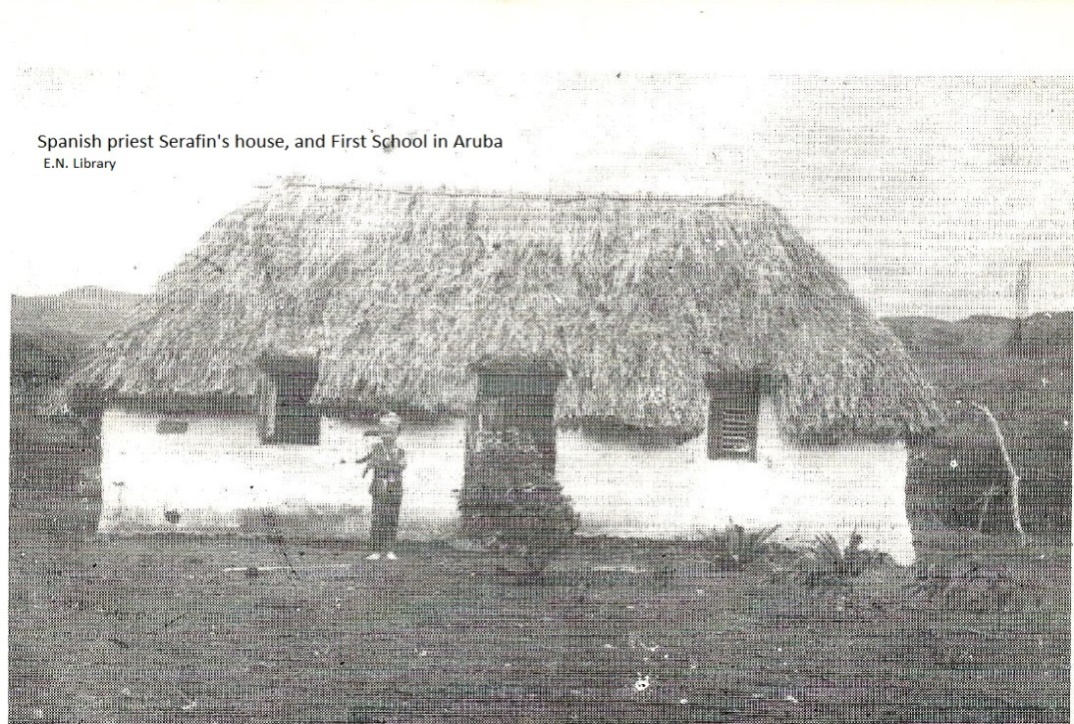
In 1822, the government started a public school in Playa, which was run by Klaas van Eekhout, a Protestant teacher. However, at the same time, the Spanish priest Serafin de Sevilla began teaching Catholic education in Playa. Years later, another Catholic father of the Capuchin order, Paulus Willems, would do the same in Noord. The Spanish language was more useful to the inhabitants of the island, who did not have much contact with the Dutch.
However, the Dutch occupation had tried to forbid visits of priests from the continent. It deprived the native population of the Roman Catholic religion. Besides all effort, a combination of Spanish and Dutch influences marks the history of education in Aruba. We must mention that due to the persistence of Catholic priests who maintained steady contact with the local population despite official prohibitions the majority of the native and mestizo population is still Roman Catholic.* (Episode 212: Building Aruban Education)*
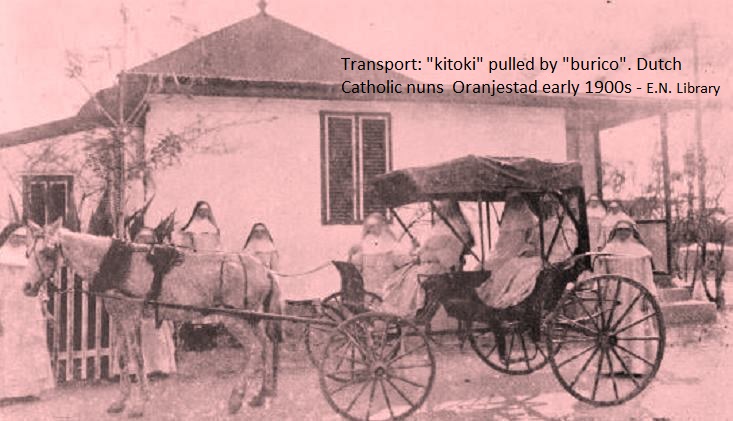
The first Catholic or native teacher in Aruba was Antoin Henriquez, who lived in Tanki Flip. He was named “Lieutenant van de Boschwachters” or chief of the warriors and it is said that, like many other native braves, he was a good man and a great “cunuquero” or farmer. He was appointed school teacher in 1857 by the Dutch commander of Oranjestad. He was respected and feared by his students because he used a “rod” to discipline and hit the palms of disobedient children’s hands.
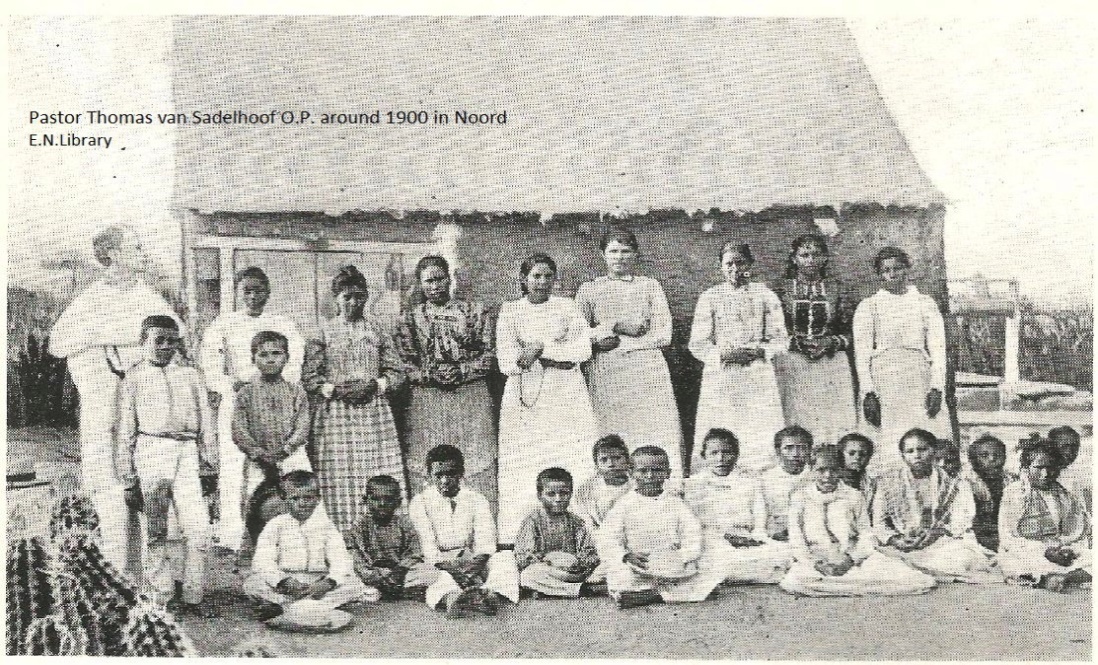
At that time, a man known as Anton de Vries arrived from his native Gelderland in Holland to also work as a school teacher. He went from house to house giving private lessons. He had further managed to gather a group of almost 70 students; however, bad luck had struck for parishioners and he died very young of “black fever”. For this reason, the school in Playa was closed until the arrival of two dedicated nuns from Roosendaal; the Netherlands reached our island to continue the teaching work, Modeste and Casimire. Now, since the arrival of these nuns, the public school in Playa has not closed again.
In 1862, the precarious school with cornstalk thatched roofs in Playa was intentionally burned down, which led to the construction of a new, larger school with a tiled roof.
At the same time, the nuns Paschalia and Clara, who had settled in the district of Santa Cruz, already recognized as a parish, began to impart Catholic education, which always continued along the right moral path. Oral tradition tells us that, at that time, the houses of the parishioners were widely dispersed, but the nuns also gave private classes in a house located near Cero Cristal so that some children in the area could also access education.
Savaneta depended on the parish of Santa Cruz, but since it was a long distance away and had approximately 50 children who needed a teacher, Piet Croes, Herry Croes, Bernardo Maduro and Gillis Maduro were there, who, exchanging with each other and took charge of education both in Savaneta and in Noord. This always took place while considering the visits of the nuns who, in one way or another, came frequently to both districts.
If you enjoyed reading our stories and are interested in learning more regarding the true Aruban identity, we recommend you to book a visit to Etnia Nativa—the only “living museum of its kind in the Caribbean”—a fascinating choice, a trend setter since 1994 and co-founders of Islands National Park, Archaeological Museum Aruba and Artisan Foundation among others. Etnia Nativa shares valuable knowledge and connects you to the ancient island’s spirit and soul. WhatsApp +297 592 2702etnianativa03@gmail.com


